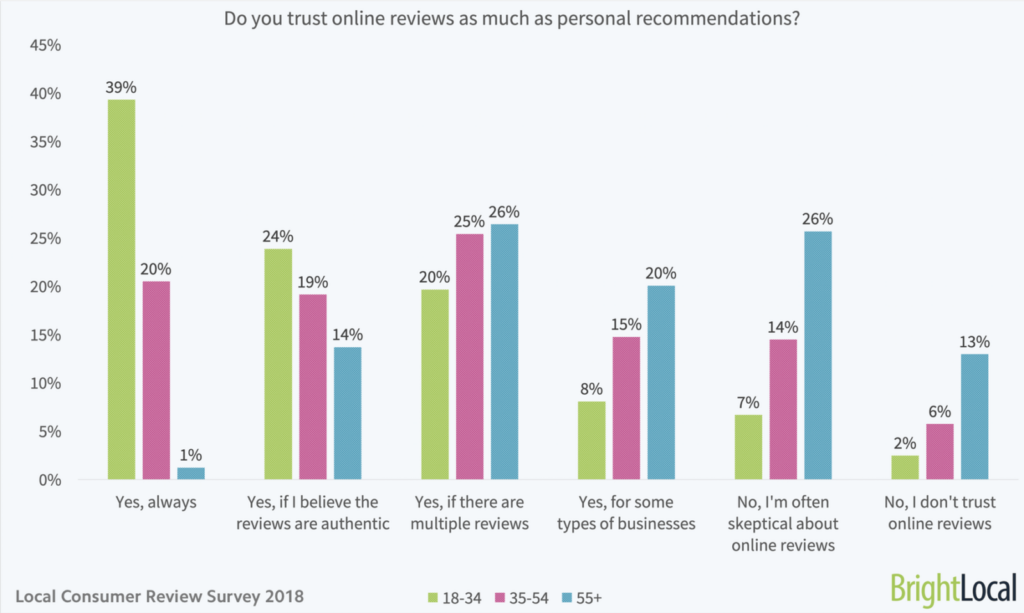Online reviews are a crucial aspect of any company’s success. Just take a look at these stats, and you’ll understand why:
- Both negative and positive reviews influence the customers’ buyer decisions; whether we are talking about a local market or a global one for which you have to localize your products or services to fit different target audiences.
- 82% of shoppers especially look for negative reviews; they spend five times more as long on a site when interacting with negative online reviews, with an 85% increased conversion rate
- Consumers expect approximately 40 reviews before considering them trustworthy
- For every one-star increase, companies find a 5-9% increase in revenue
- 51% of customers expect a response to their reviews
- 91% of consumers aged 18-34 trust reviews as much as the personal recommendations

As you can see, reviews are vital for your business because they provide you with social proof and are strongly correlated with the company’s sales and, implicitly, with your revenue.
That’s why you need to know how to manage your online reviews. In this article, we will show you some tips and tricks that you can implement when you try to figure out how to respond to negative reviews.
1. Respond to Each Review
Each negative review deserves a response. This is not only good customer service but also shows those who visit your website that you care about what your customers think about you and the products or services you offer. The worst thing you can do is to ignore the feedback, even if they are online game reviews or related to an e-bookstore.
2. Make it Personalized
People can detect templates or predefined answers from a mile away. If all the replies to the negative reviews are the same, customers will question your sincerity. Address everyone personally (for example, “Hello Timothy …”), try to really understand the cause of their dissatisfaction and actually get involved in their problem.
3. Apologize
Apologize for how your customers felt about their experience. Note, you should do this even if you were not responsible. Whatever the case may be, your customer did not have a positive experience with your company. Empathy goes a long way in winning back your customer.
4. Keep it Cordial and Professional
Your first response may be to be defensive or combative over some things said about your company. This may lead you to post nasty attacks on your customer. Resist that urge. Remember, online reviews are on public platforms. Do not tarnish your company’s image by name-calling or using expletive language. Instead, be professional and courteous in how you speak when responding to negative reviews.
5. Take it Offline
After you respond with a personalized apology, you should take the issue offline with your customer. A public review forum is no place to figure out the details of what went wrong. Moreover, others reading the thread of responses can easily misinterpret the context of the situation. Instead, reach out to your customer either through phone or email to work on a solution.
6. Go Above and Beyond
Do what you can to win back your customer. Offer compensation for the hassle they had to deal with. This can include offering extra credits, a money-back guarantee, or free add-ons on their next purchase.
7. Request Customer to Update Their Online Review
After solving the problem with your client, request them to remove the negative feedback or update it with a positive review. This type of review is especially powerful because it shows you went the extra mile to resolve your customer’s issues. And also gives you the opportunity to find the best ways to respond to positive reviews.
8. Improve Your Business
Fixing negative online feedback does your business no good if you don’t learn from your mistakes. Take the negative review as a learning experience to improve your business.
Bottom line
Feedbacks are important, being directly linked to customer trust and creating social evidence. Simply put, they’re here to stay. Instead of being afraid of them, you should consider them as a way to get a direct line to your customers and learn how to answer the online reviews, both positive and negative.






